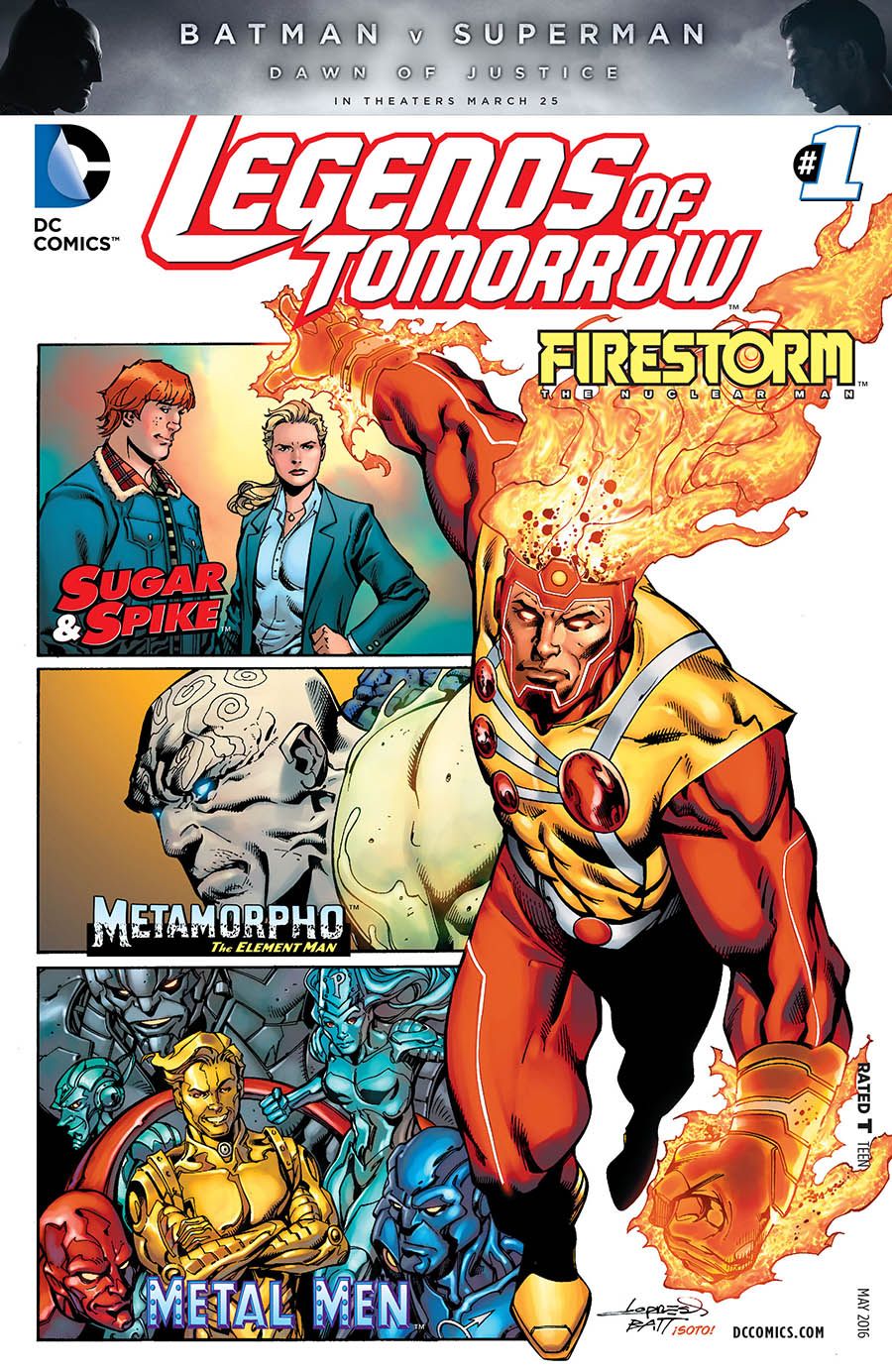Let's start with the proverbial elephant in the room: "Legends of Tomorrow" #1 has virtually no connection to the television show. Both of them feature Firestorm, but that's where the similarity begins and ends. Really, this comic takes four completely different character pieces and serves them up at a fraction of the price of a miniseries. Here's the good news: three of these four comics are enough fun that I'd want to buy an entire series based on them, even if they were all offered up separately.
Gerry Conway, Eduardo Pansica and Rob Hunter tackle Firestorm, and it's not much of a surprise that this creative team instantly has a handle on the character. Conway co-created the character, and -- while Robbie Raymond is merged with Jason Rusch these days -- Professor Stein is still in the picture and the story does a good job of juggling the characters' personal and superhero lives. Some past writers have given Robbie and Jason a more adversarial relationship, so it's nice to see that greatly muted here. Conway's script assumes nothing and reintroduces readers to all of the characters here, putting them in context without lengthy exposition. As the problems begin to manifest themselves, it's done in a gradual, careful manner so that things shift from bad to worse. Pansica and Hunter's art is a good choice, with clean and full figures and graceful movement as Firestorm as he zooms around the page. It's a smart choice for the opening story in the book; it looks good and it's a character with some added cachet thanks to appearances on the "Legends of Tomorrow" and "The Flash" television shows.
Aaron Lopresti and Matt Banning's "Metamorpho" takes the character back to his roots. The story picks up almost immediately after he gained his powers. Those who haven't read the original "Metamorpho" comics (which are helpfully collected in a "Showcase Presents" volume) might be unfamiliar with Simon Stagg, Sapphire Stagg and Java. While they were never the most riveting characters, Lopresti keeps the story moving at a good enough pace and makes Sapphire less of a rescue/love figure and more of someone with skills of her own, so that her presence feels satisfying. Lopresti really shines thanks to his pencils on the book, though, which (along with Banning's inks) give Metamorpho a real fluid, changing look. This is a depiction of a character that really brings home the idea that he can shapeshift into all sorts of elements; when Metamorpho's right arm inadvertently punches Java on the title page, the way the rock ripples and flows (to say nothing of everything else going on) is just gorgeous.
It's the third feature I found myself the most surprised by; the idea of an adult version of the precocious children's comic "Sugar & Spike" sounds a little wrong-headed, to be fair. That said, the story Keith Giffen and Bilquis Evely serve us is so much fun I'm sad this isn't an ongoing series. There's honestly no connection to the child versions of the characters; for now, this is simply a story concept with some pre-existing names grafted onto it. Fortunately, it's a very fun concept that portrays the duo as private investigators. Their attempt to find a prize within Killer Moth's warehouse lair is tense and fun, even as Giffen's sly sense of humor crops up repeatedly through both dialogue and the situations at hand. The characters are genuinely smart and competent (Sugar's way to lure the henchmen into attacking is a great little scene), and Giffen finds the right balance between serious and ludicrous. That said, the icing on the cake is Evely's art, which is fantastic. It's almost reminiscent of Jose Luis Garcia-Lopez's art, with an incredibly strong line providing textured artwork and a strong sense of movement. Look at how Sugar jerks back when a henchman's hand pops through the shelving or the look of surprise on Spike's face when he rounds the corner and finds a henchman waiting for him; the pair look wonderfully realistic here without ever feeling stiff or posed. Whatever Evely works on next, I'll buy.
Len Wein and Yildiray Cinar's take on the Metal Men closes out the comic, and it's the only story that didn't quite click. Cinar's art looks nice, with especially fluid forms for Mercury, Gold and Platinum. The Metal Men all look strong and distinct, a reminder that these are robots. Wein's story never engages the reader, though. The AI called Nameless lacks any real menace or lure, and this younger Doc Magnus similarly lacks any strong personality to draw readers back. While I get that the opening fight scene serves as a way to introduce the Metal Men, it ultimately feels like a throwaway with no real connection to the rest of the story. This is the only one of the four
stories where I wouldn't come back for a #2; there's nothing noteworthy here to hold one's attention.
As three out of the four features are worth the read, "Legends of Tomorrow" #1 is a real victory. Hopefully, this book will get some attention and maybe even come back with another series of spotlights on different characters in the DC Universe. This gives readers a lot of bang for their buck, and -- in the end -- I want to see more of "Tomorrow's" characters today.

